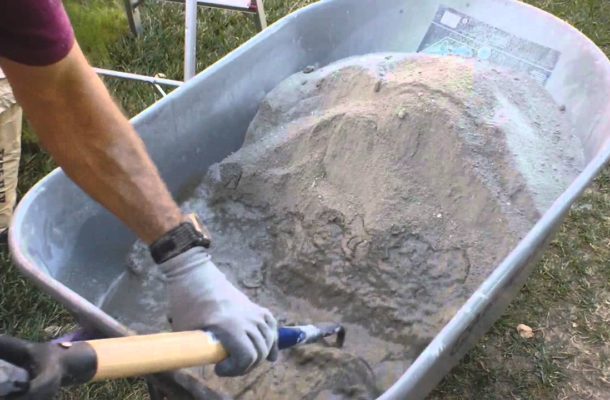Cutting carbon emissions from cement

Few people realise that cement production is the single biggest industrial producer of the carbon emissions which cause global warming. Cement production comprises a shocking 8% of global carbon emissions – more than every car in the world.
The first stage of cement making is to transform limestone (calcium carbonate – CaCO3) into lime (CaO), a chemical process which releases carbon dioxide (CO2) as a waste product. Over half of cement-related emissions are due to this chemical process. The world cannot continue to use limestone in this way any more than we can keep burning coal, if internationally agreed targets to limit carbon emissions are to be met.
Fortunately, the technology exists to wipe out emissions from cement in ten years, and with smart thinking, we can even turn cement into a carbon sink of the future.
A Zero Carbon Cement Industry
The Rethinking Cement plan published by Beyond Zero Emissions describes a pathway for tackling cement emissions involving the following five strategies:
• Strategy 1: Supplying 50% of cement demand with geopolymer cement. The reactions involved in making geopolymer cements do not generate greenhouse gases, and therefore zero emission geopolymer cements are possible.
• Strategy 2: Supplying 50% of cement demand with high-blend cements. Regular cement can be blended with other materials, reducing its carbon intensity. This strategy proposes increasing the proportion of replacement material to 70%, using fly ash, slag, clay and ground limestone.
• Strategy 3: Mineral carbonation. This strategy employs a new technology, mineral carbonation, to capture the emissions from the remaining production of Portland cement. With mineral carbonation, waste carbon dioxide is captured and chemically sealed within rock.
• Strategy 4: Using less cement. By designing structures to use concrete more efficiently, utilising high strength cement, and replacing concrete with timber, overall cement consumption could be reduced by around 15% in 10 years.
• Strategy 5: Carbon negative cements. There is the long-term potential to develop magnesium-based cements which absorb carbon dioxide, and would therefore have a negative emissions profile.
Making It Happen
Governments and industry could support a rapid shift to a zero carbon cement industry through a national policy putting a price on cement carbon emissions, including imported cement. The Australian Government could back up this approach with a national target to reduce the carbon intensity of cement, which became progressively more stringent as progress was made.
This target could be supported by public investment into research and deployment of low-carbon cements, similar to the support for renewable energy provided by the Clean Energy Finance Corporation and the Australian Renewable Energy Agency.
Governments could also introduce new regulations or incentives to encourage the use in cement production of stockpiled fly ash and other waste materials such as waste glass, red mud and bagasse ash.
Infrastructure Sustainability Ratings
Beyond Zero Emissions (BZE) and the Infrastructure Sustainability Council of Australia (ISCA) are already collaborating to encourage the use of low carbon cements in new Australian infrastructure.
Indeed, Australia could lead the world on zero carbon cement with widespread implementation of ISCA’s Infrastructure Sustainability (IS) rating scheme.
ISCA’s CEO Antony Sprigg said, “Our new IS Innovation Challenge will reward infrastructure projects that manage to replace at least 50% of Portland cement with alternative, low carbon cements.”
BZE’s Head of Research, Michael Lord, said, “We think that Australia can lead the world towards zero carbon cement, and ISCA’s new Innovation Challenge will make a big contribution to that.”
ISCA’s IS Rating scheme will introduce two new incentives, aligned with BZE’s approach:
• A new Innovation Challenge will encourage greater use of low-carbon content within Portland cement.
• The updated IS Materials Calculator for ISv2.0 will award points for the use of geopolymers – an alternative, low-carbon type of cement.
ISCA already rewards projects for replacing a proportion of Portland cement clinker with low-carbon alternatives such as waste fly ash. Their analysis indicates that IS rated projects have achieved an average of 21-25% Portland replacement.
Rethinking Cement outlines many projects which have already exceeded these targets. London’s ambitious Crossrail scheme, which will lay a new 100-kilometre railway across London, has achieved an average of 50% Portland cement replacement and Australia’s newest airport, Brisbane West Wellcamp Airport, was built mostly from low-carbon geopolymer concrete.
ISCA’s new innovation challenge is available on the ISCA website.





